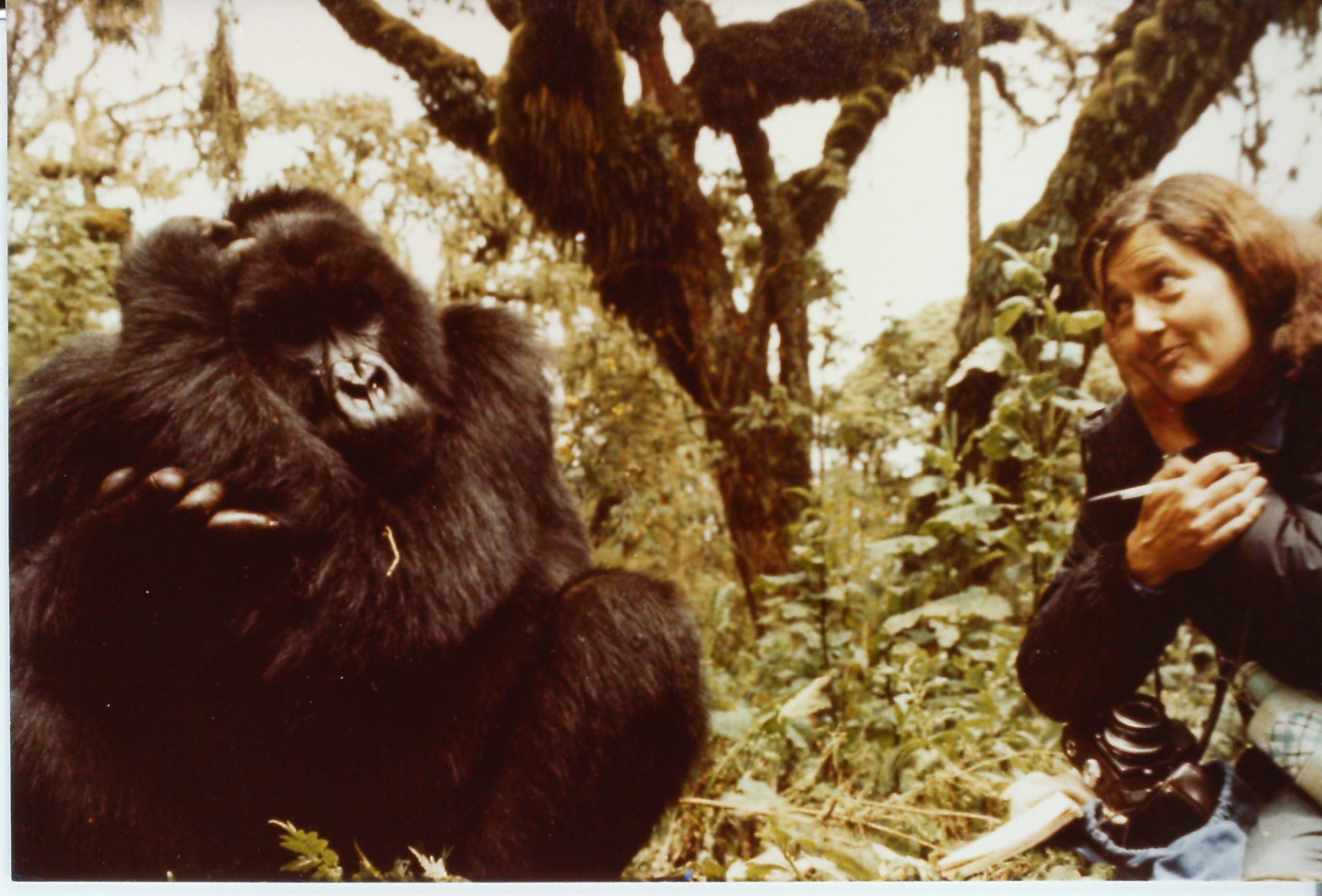 The Dian Fossey Gorilla Fund is delighted by the just-released results of an important gorilla census undertaken in Uganda’s Bwindi Impenetrable Forest, which shows a minimum of 400 gorillas, up from 302 counted in the last census (2006), reported today by the Uganda Minister for Tourism, Wildlife and Antiquities and the Uganda Wildlife Authority. This now brings the total world population of mountain gorillas up to a minimum of 880, when the 480 from the Virungas are added.
The Dian Fossey Gorilla Fund is delighted by the just-released results of an important gorilla census undertaken in Uganda’s Bwindi Impenetrable Forest, which shows a minimum of 400 gorillas, up from 302 counted in the last census (2006), reported today by the Uganda Minister for Tourism, Wildlife and Antiquities and the Uganda Wildlife Authority. This now brings the total world population of mountain gorillas up to a minimum of 880, when the 480 from the Virungas are added.
Bwindi is home to a population of mountain gorillas that is separate from the mountain gorillas of the Virungas and which was once thought to constitute a separate subspecies. The latest census of the Virunga gorillas, in 2010, also showed a significant increase. The Bwindi census began in September 2011, and the Fossey Fund provided three experienced trackers from its Karisoke Research Center to assist. The Fossey Fund operates daily gorilla monitoring and anti-poaching patrols of mountain gorillas in Rwanda.
“We are very happy to hear about the increase in the Bwindi population of mountain gorillas and proud of our staff’s contribution to the census,” says Karisoke Director Felix Ndagijimana. “Besides the fact that Bwindi Impenetrable Forest and the Virunga Volcanoes are the only forests on earth where we can find mountain gorillas, the differences in these two separate populations provide important clues to the evolutionary history of these great apes and to the species’ adaptations to different types of forest habitats. It’s very encouraging to hear that the conservation efforts both in the Virungas and in Bwindi have been so successful thus far, and we would like to congratulate our Ugandan partners and colleagues in gorilla conservation on the fantastic results of this census.”
In this census, night nests and feces were documented to generate a current estimate of the population and fecal samples were collected. Teams did two sweeps, one in September and one in November 2011, followed by genetic analysis of the fecal samples.
John Ndayambaje, the Fossey Fund’s field data coordinator at the Karisoke Research Center, helped with the Bwindi census as an assistant team leader. He describes Bwindi as being a very difficult and sometimes dangerous place to track gorillas. Some of the main challenges were geographic. The dense vegetation made it very difficult for trackers to clear trails through the forest. Moreover, there are many swamps, hills, ravines, and even rivers that posed risks for trackers who had to follow a very specific set of GPS coordinates as they conducted the census. “It was very, very difficult for the trackers to cut and make a way for the others with notebooks, GPS, compasses, and all the other equipment,” says Ndayambaje.
The weather during the census was also difficult. It was muddy and rained often. In fact, one night, says Ndayambaje, his team’s entire camp was destroyed due to heavy rains, and they had to replace much of their food and equipment.
Bwindi Impenetrable Forest also has many unhabituated gorillas, who can pose a threat to trackers if they surprise them in the forest. The unhabituated gorillas were also difficult to count accurately. Ndayambaje says, “It was not easy, when we found a group which was not habituated, to know how many were in the group. We had to track back to see how the nests were and try to count the nests and collect samples.” By measuring samples of dung found in the gorillas’ nests, the team could identify how many individuals were in the group and their ages.
The 2011 Bwindi mountain gorilla census was conducted by the Uganda Wildlife Authority with support from l’Institut Congolais pour la Conservation de la Nature and the Rwanda Development Board. The census was also supported by the International Gorilla Conservation Programme (a coalition of the African Wildlife Foundation, Fauna & Flora International, and WWF), the Max Planck Institute for Evolutionary Anthropology, Conservation Through Public Health, the Mountain Gorilla Veterinary Project, the Institute for Tropical Forest Conservation, and the Dian Fossey Gorilla Fund International.
This census was funded by WWF-Sweden with supplemental support from Berggorilla & Regenwald Direkthilfe e.V., the Wildlife Conservation Society, and the Max Planck Institute for Evolutionary Anthropology.
###






